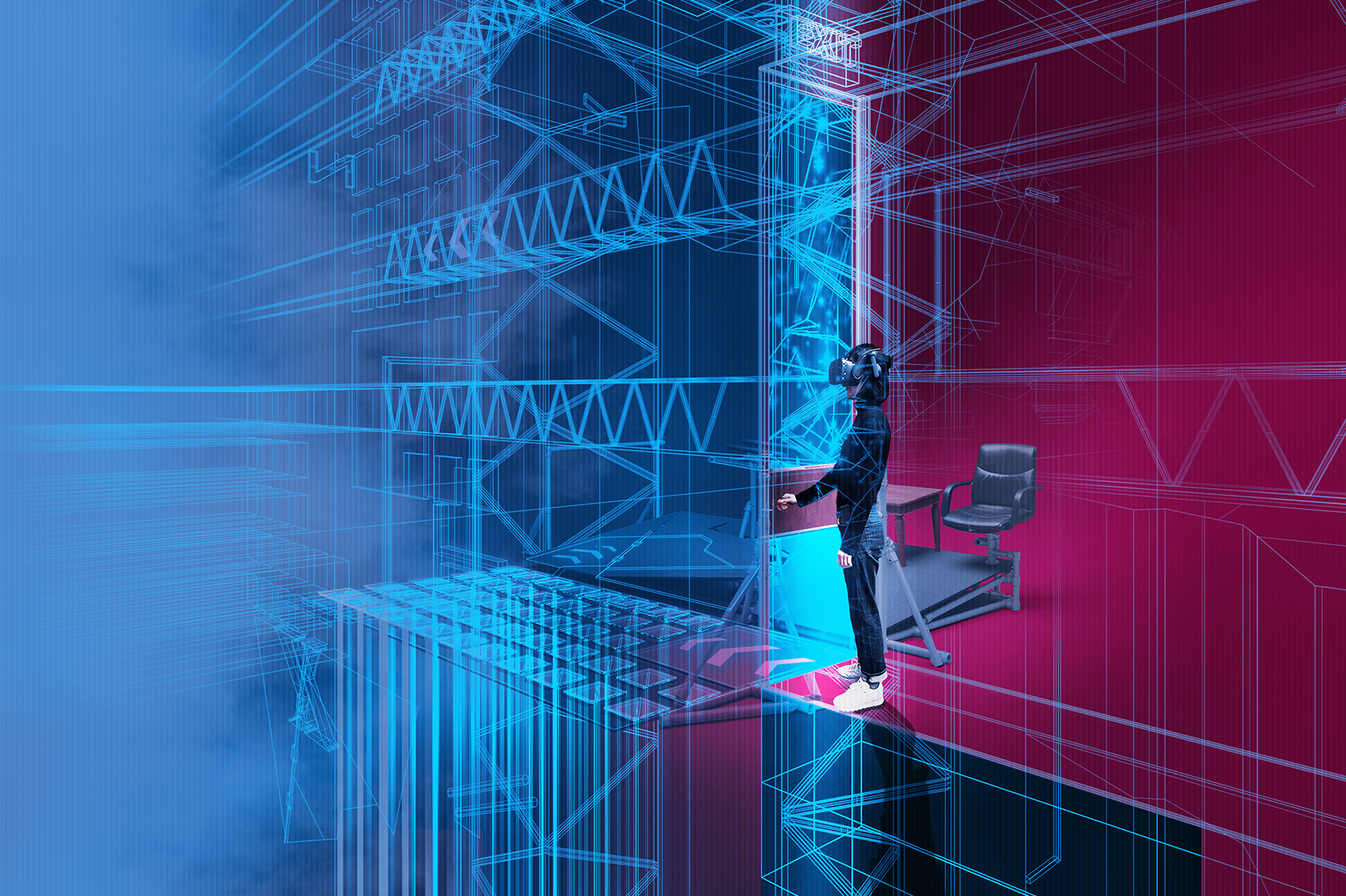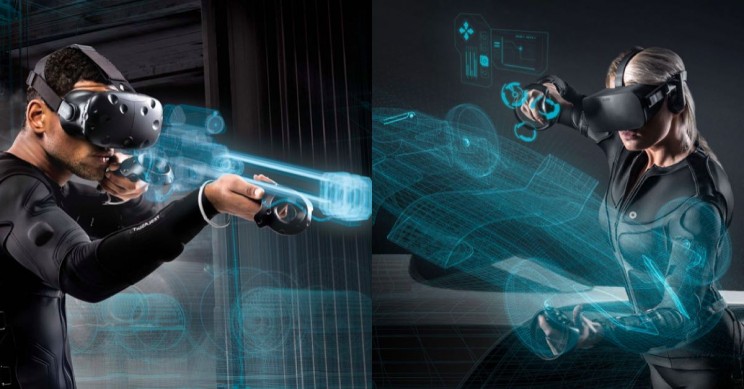Tactile VR is a haptic digital architectural environment that combines physical materiality with digital information to create a multi-sensory, interactive experience.
Virtual Reality (VR) technology utilises visual and auditory senses to allow users to experience and create immersive and dynamic virtual environments. However this space lacks the sense of touch, isolating the user to a completely computer generated reality. In contrast, although architecture has rarely been dynamic or interactive, buildings use tactile materials to augment the spatial experience within these spaces.

‘Tactile VR’ is a project that combines these two realities together to explore the concept of tangible data. Through the installation users can engage with a new type of architectural space, where the tactility of physical architecture is merged with dynamic digital spatial configuration.
Methods of creating tactility
There are multiple ways in which we could solve this issue, I think it is useful to split them into 3 modalities:
1. Object-driven
Object driven is exactly that, using real world objects and mapping the VR object to it. This is by far the easiest of approaches to generate tactility in a VR world. It is likely that this form of tactility in virtual reality will be the earliest form of fully immersive VR.
2. Peripheral Sensation
Peripheral sensation is genuine sensation, without bypassing the users peripheral nervous system, but without the need to generate real world objects. With this it would theoretically be possible to simulate virtual reality tactility without any need for real-world objects, transforming our ability to produce large immersive VR worlds.
3.Central Simulation
Central simulation describes the process of bypassing the patients peripheral nervous system entirely, manipulating the central nervous system directly to simulate experiences to the patient. The advantages to this modality of sensory simulation are tremendous. We would be able to build entire virtual worlds, with complete sensory integration.

ADVANTAGES
- Helps with Impressive Visualization
- Creating Interest
- Improves Educational Value
- Helps to Overcome Language Barriers
DISADVANTAGES
- Lacks Flexibility
- Ineffective Human Connections
- Getting Addicted
SUMMARY
Virtual and augmented reality is likely to become a tremendous tool within healthcare and medicine within the coming years, however, it is hindered from creating truly immersive experiences due to its lack of sensory simulation while some senses are easy to fool, tactility is not one of them.









